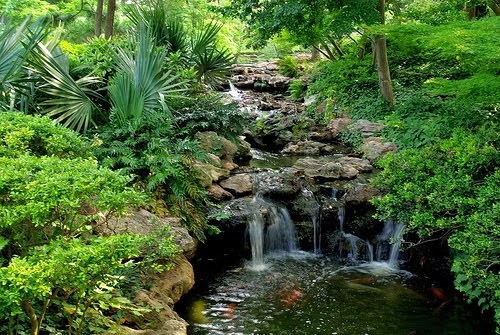
The Ultimate Guide on How to Make a Backyard Koi Pond
Introduction
A koi pond in your backyard can be more than just an aesthetic improvement. It serves as a peaceful escape from the chaos of everyday life while adding value to your property. But, building a water feature may seem intimidating to many. With this step-by-step guide, you will learn how to make a backyard koi pond with ease.
Step 1: Plan the Pond Design and Location
The first step in constructing a koi pond entails planning the design and location. Some key considerations include:
- Size: Consider the size of the pond by evaluating the space in your backyard. A pond that measures 10- by 17-feet will be suitable for maintaining around ten koi or water lilies.
- Location: The location of the pond should be in a space protected from tree shade and gusty winds. Koi prefer sunlight and may not thrive in shaded waters. Also, avoid camouflaging the pond in your landscape by placing it where it’s easy to view and appreciate the fish and plants.
- Water supply: Ensure there is an adequate water supply to fill the pond, as well as a way to drain it for cleaning purposes.
- Electricity supply: Koi ponds often need power supply for equipment that maintains pond conditions such as pumps, heaters, and filters.
- Safety: Install necessary safety measures around the pond like railings to prevent children and pets from falling in.
Step 2: Excavation and Shaping the Pond
Now that you have the design and location figured out, it’s time to dig a hole for the pond. When digging, ensure the pond’s depth and shape align with your initial plans.

After excavating, level the ground and remove any sharp edges or debris that can puncture the pond lining.
Step 3: Install the Pond Liner and Skimmer
A pond liner is a crucial component to prevent water from seeping through the soil and losing water. Before installation, it’s essential to measure the pond’s length, width, and depth accurately. Consider using heavy-duty and flexible products like EPDM liners that can withstand sunlight, sharp objects, and extreme temperatures.

Add a skimmer on the pond’s surface to collect surface debris, such as fallen leaves and sticks. These can discolor the water and clog the filter system.
Step 4: Adding the Water and Rocks
Fill the pond with city tap water or water from a well until it reaches the desired depth. Make adjustments to the water pH, alkalinity, and hardness to accommodate fish and plants and stabilize the water conditions.

Add rocks to the pond’s bottom or sides to create a natural-looking habitat for fish and bacteria in the future. Large boulders or stones can be used at the pond’s perimeter to ease erosion and support the edging.

Step 5: Installing the Filtration System and Pump
A pond filtration system ensures good water quality by ensuring a circulation of oxygen and nutrient balance. The filter acts as a biofilter by harboring beneficial bacteria that break down unwanted organic material. The pump, on the other hand, maintains a healthy pond environment by creating water flow and helping to aerate the water.
Proper installation of the filtration and pump systems ensures long-term health, stability, and consistency in your pond environment.
Step 6: Adding Plants and Koi Fish
Once you have the pond operational, it’s time to introduce koi fish and water plants to make it lively and exciting. Before adding fish to the pond, let it run for at least two weeks to allow the water to stabilize.
Some popular pond plants to consider include water hyacinths, water lilies, and horsetail. These plants offer shade and shelter for fish while also serving as an aesthetic aspect of the water feature.
Step 7: Maintenance and Care
Pond maintenance involves performing regular checks and maintenance on the pond’s equipment, cleaning the pond, and monitoring its water values. Schedule to perform tasks like feeding fish, algae control, water check, debris removal, and general maintenance to keep your garden koi pond in good condition.

Conclusion
A backyard koi pond can be an impressive addition to your garden that provides a peaceful ambiance and a home to beautiful fish and plants. With this guide, you have the perfect plan to build a beautiful koi pond that will complement your backyard and add value to your home.